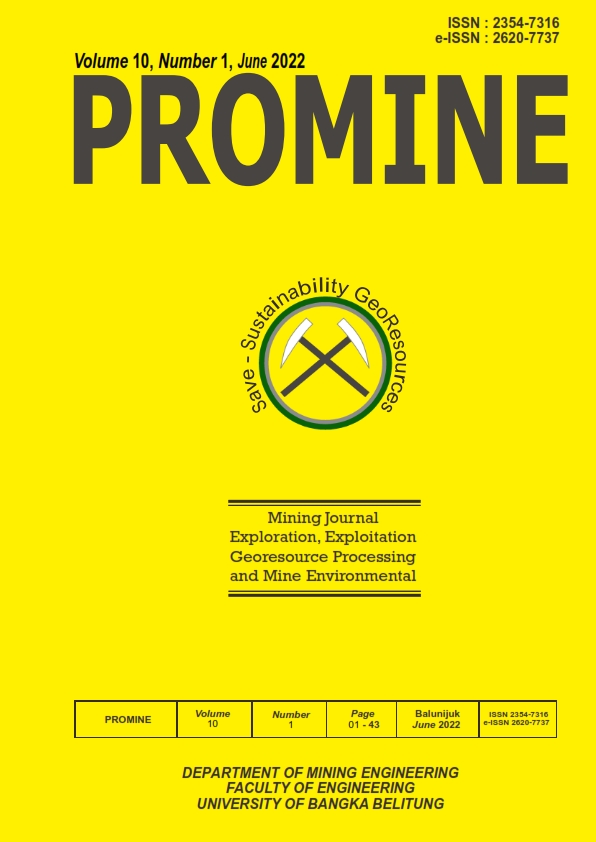An Investigation Of Groundwater Condition By Geoelectrical Resistivity Method: A case study in Bengalon, East Kutai, East Kalimantan Province
DOI:
https://doi.org/10.33019/promine.v10i1.2281Keywords:
Groundwater, geoelectric, alluvial, BengalonAbstract
Bengalon is located in East Kutai Regency, East Kalimantan Province. Bengalon is included in the Samarinda-Bontang groundwater basin. The development of agricultural and industrial areas, followed by an increase in residential areas, will cause an increase in the water demand. This study aims to determine the groundwater potential of alluvial areas using the resistivity geoelectric method. The resistivity survey resulted in subsurface lithology, shallow groundwater conditions in the form of depth, thickness, and location of the aquifer as well as the type of groundwater quality. There are 10 locations for geoelectric data collection using the 2D geoelectric method. The results showed that the majority of the aquifers were alluvial deposits consisting of sand and sandy clay. The resistance indicating groundwater is 1 - 4 Ω m, at a depth of 10 – 50 m with a thickness varying from 10 – 20 m which has been dominated by sand. The presence of sea water intrusion in aquifers causes the quality of groundwater to tend to be brackish because the research location is in a swamp area bordering the coast.



